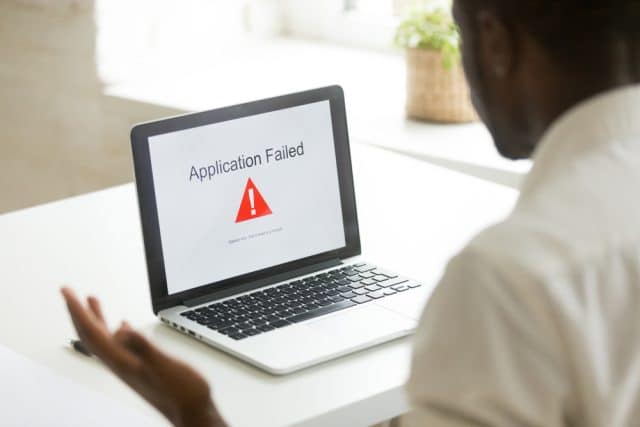Major app crashes are a wake-up call for organizations to improve their app stability

Organizations in virtually every industry rely on apps to provide a critical part of the customer experience. When those apps prove to be unstable, end users can be impacted in ways that cause considerable consternation. Last year, a variety of major organizations suffered significant app crashes that resulted in serious disruptions, lost revenue and hurt reputation.
For example, London’s Heathrow Airport, one of the world’s busiest airports, experienced two simultaneous app failures that prevented departure boards from displaying accurate information and kept travelers from being able to check-in electronically, causing thousands of passengers to have their flight delayed or cancelled. Later on in 2020, bugs in Facebook’s Software Developer Kit (SDK) led iOS versions of Spotify, Pinterest, TikTok, Venmo, Tinder, Doordash and other notable apps to crash as soon as they were opened. Finally, popular eSports game Apex Legends encountered so many ongoing app crashes last Fall that a major tournament was ruined, with all matches but one having at least a single player disconnect.
Almost every medium or large-sized organization, whether they’re an enterprise providing B2B or B2C services or a government agency, offers its own homegrown apps to interface with customers. These apps may generate the majority of that organization’s revenue (such is the case with an e-commerce or mobile gaming company), or they may simply help improve and enhance a real-world service (such is the case with an airline or healthcare provider). No matter what the case is, these apps play a critical role in supporting the user experience, and thus are key to driving revenue.
The major app crashes highlighted above should serve as a wake-up call for every organization. Facebook and Heathrow Airport Holdings are major enterprises and leaders in their industry. If such large players can suffer key app outages for an extended period, then any company can experience the same problems.
These crashes disrupted the work and personal lives of millions of people. Events like these ultimately highlight the importance of app stability. At a high level, app stability is a newer metric that provides the most fundamental measurement of app health. It’s calculated as the percentage of app sessions that are crash-free and do not result in an unhandled exception, or as the percentage of daily active users who do not experience an error. Essentially, it tells you how many users are having successful, functional app experiences.
App stability is critical to gaining and keeping end users and is closely associated with basic business outcomes. Put simply, people don’t have much patience for apps that fail. A recent study shows that 21 percent of users will give up permanently on an app if it crashes during their first experience, while a whopping 84 percent will give up forever if it crashes during their first two experiences. It doesn’t matter what great features those apps may incorporate. If they don’t run properly, people won’t use them. While giants like Facebook and Microsoft can overcome occasional app failures, everyone else, including large enterprises, will lose a significant number of customers from each crash.
The COVID pandemic has dramatically accelerated the process of digital transformation. In a post-pandemic world, more and more customers are interacting with organizations via their apps than ever before. This ongoing transition has been anticipated for years. But no one realized it would move forward so quickly before COVID hit. Organizations now are scrambling to better optimize their digital experience. To achieve this, they need to prioritize app stability.
Traditionally, app stability is a metric that’s mostly been used by engineering departments, and they’ve only recently adopted it. Outside of engineering teams, most C-level and other high-level executives have no idea what app stability means. And they definitely don’t know what their organizations’ app stability scores are. But with increasing numbers of people interacting with companies digitally, more revenue is directly and indirectly being driven by the app experience. Aside from simple revenue, the app experience also impacts other critical KPIs like customer conversion rates, average purchase values, engagement and loyalty.
Because of this, all high-ranking executives should become familiar with app stability. Customers will only continue to use apps more and more in the coming years, which means revenue and other key business metrics will be increasingly impacted by the digital experience. App stability provides the most straightforward and important barometer for apps -- determining whether they work or not. Not only should the C-suite and Boardroom prioritize it, entire organizations must.
Image credit: fizkes / Shutterstock
Kirti Dewan is VP of Marketing, Bugsnag
